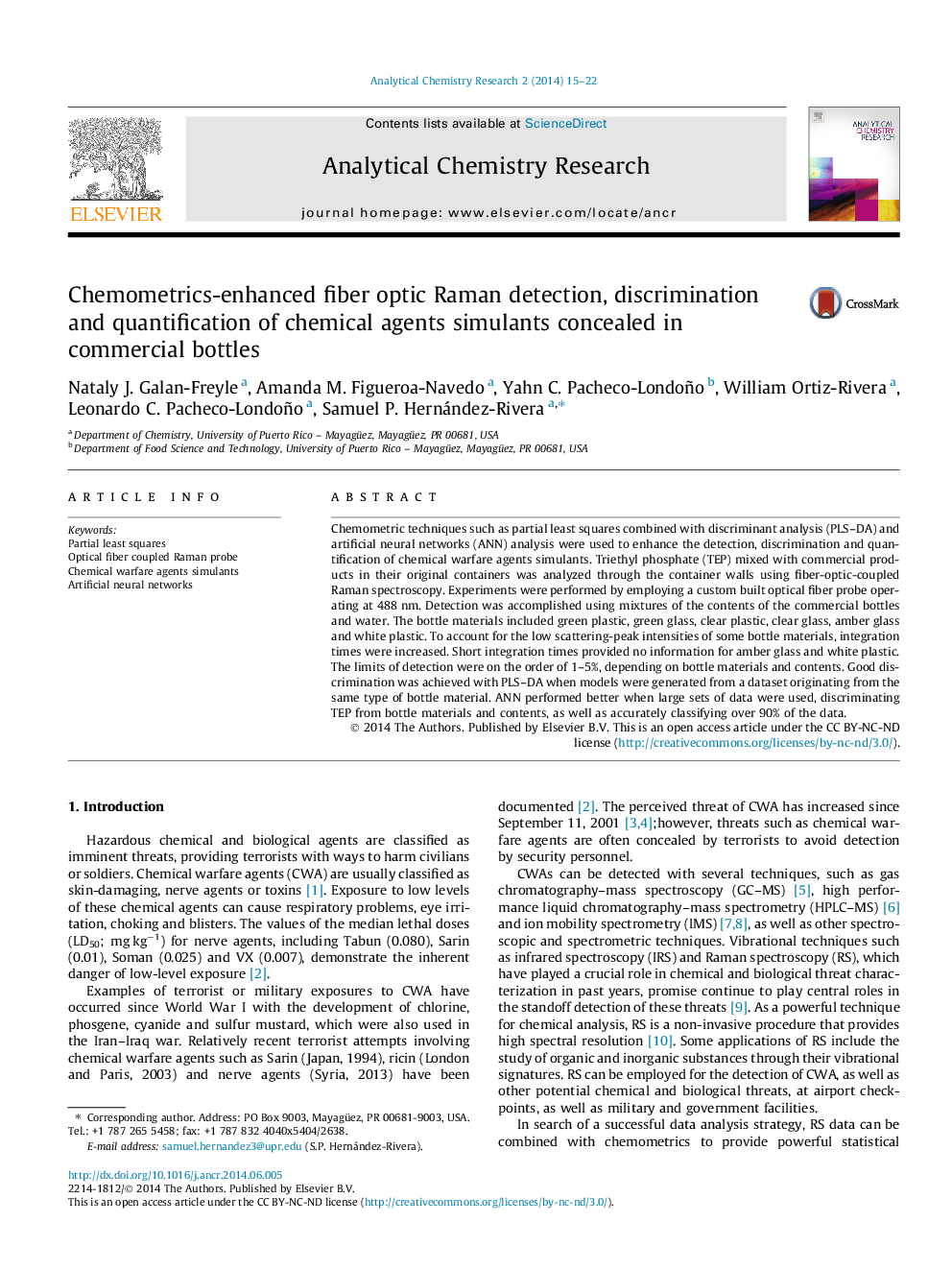| کد مقاله | کد نشریه | سال انتشار | مقاله انگلیسی | نسخه تمام متن |
|---|---|---|---|---|
| 1177677 | 1491433 | 2014 | 8 صفحه PDF | دانلود رایگان |
• Detection of TEP in commercial bottles contents with 488 nm fiber optics coupled Raman spectroscopy.
• Normalization of integration time with respect to %T of bottle materials.
• Implementation of pattern recognition schemes in order to identify CWAS.
• Limits of detection of ∼1–5% (v/v) depending on bottle materials.
• Multivariate analyses: PLS–DA and ANN able to classify correctly over 90% of data.
Chemometric techniques such as partial least squares combined with discriminant analysis (PLS–DA) and artificial neural networks (ANN) analysis were used to enhance the detection, discrimination and quantification of chemical warfare agents simulants. Triethyl phosphate (TEP) mixed with commercial products in their original containers was analyzed through the container walls using fiber-optic-coupled Raman spectroscopy. Experiments were performed by employing a custom built optical fiber probe operating at 488 nm. Detection was accomplished using mixtures of the contents of the commercial bottles and water. The bottle materials included green plastic, green glass, clear plastic, clear glass, amber glass and white plastic. To account for the low scattering-peak intensities of some bottle materials, integration times were increased. Short integration times provided no information for amber glass and white plastic. The limits of detection were on the order of 1–5%, depending on bottle materials and contents. Good discrimination was achieved with PLS–DA when models were generated from a dataset originating from the same type of bottle material. ANN performed better when large sets of data were used, discriminating TEP from bottle materials and contents, as well as accurately classifying over 90% of the data.
Figure optionsDownload as PowerPoint slide
Journal: Analytical Chemistry Research - Volume 2, November 2014, Pages 15–22
